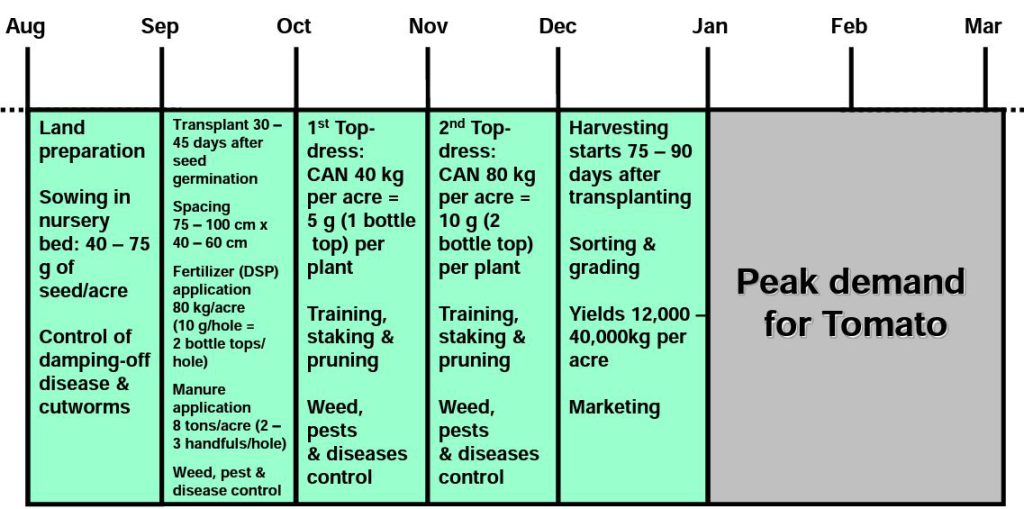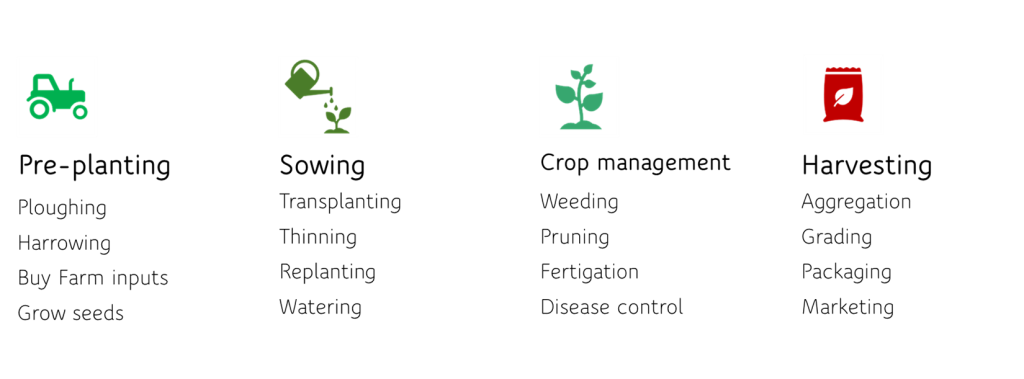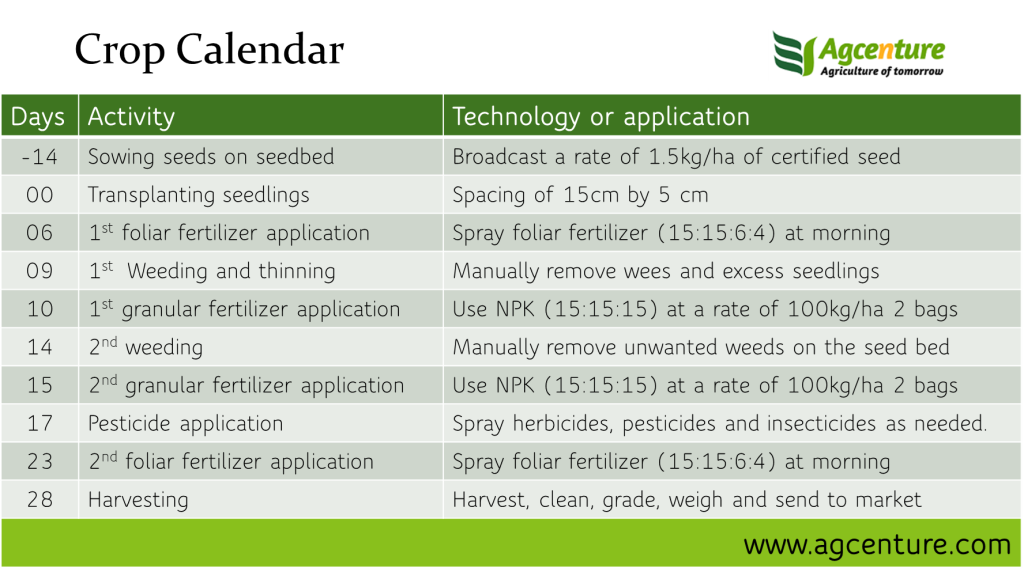Are you looking to reap the best prices and profits from your farm? The use of a crop calendar can be a game changer. It will help you to prepare land, plant, manage, harvest and sell your crops on time when prices are highest. In this post learn how to make and use a cropping calendar. Besides learn about types and benefits of a crop calendar.
What is a crop calendar?
Cropping calendar defined as a written schedule of the crop growing season from the land preparation, to crop establishment and maintenance (weeding, fertilizing) to harvest and storage. They help you to predict best time to plant and harvest crops, or to breed your livestock.
They were in use since the early days. They determine the best days for sowing crops, religious celebrations and harvesting festivals. The Mayans observed the planet Venus while the Greeks observed the Pleiades for harvesting. Egyptians observed the Sirius star to mark the start the Nile flooding of for irrigation. Native Americans would keep a bundle of sticks to keep track of moons while Native Africans would keep a knotted rope. The Celts, Islamic and Jewish people observed lunar cycles. Long before the 12 months cycle, tribes had Grass moons, corn moon or harvest moons to observe agricultural calendars.
Today, a crop calendar is a must have farm record for any serious commercial farmer. It is the key “to do list” for the farmers, managers and workers. You must refer to it so that you can know, coordinate and execute the daily or weekly planned farm activities.
Types of a crop calendar

There are two types of planting calendars: the annual crop calendars and the single crop calendars. These can be presented as either tabular, graphical or a pictorial crop calendar. They describe activities
Annual crop calendars
Annual crop calendars show you the whole year crop production pattern. They prepared for the entire nation or a large area from early January to December. They are developed by the ministry of Agriculture advising all farmers on the best crops to farm following the region’s climate patterns.
The annual crop calendars are weather based and classify cropping into short and long rain seasons. This way, you can plant the early, normal or late maturing seed varieties. This production cycle is determined by the length of growing season and the crop cycle length.
Single crop calendars
The single crop calendars show the cropping plan for an individual crop e.g., wheat from land preparation to the harvesting and replanting for the next season. It will show you the details to days or weeks. Besides it will give you technologies like best seeds, fertilizers to use.
Benefits of using a cropping calendar
Farmers know best that there is a season for everything. A time to plant and a time to harvest. A slight deviation can be the difference between success and failure. The advantages or benefits why you need to make and use one include.
- A crop calendar is a planning (budgeting) tool to allocate time, money and labor for production and marketing of crops and livestock in your farm.
- It is a tool of formal and efficient farm management especially for commercial farmers.
- It a key tool for loan and funding negotiations with bankers and creditors in the distribution realization of the loans
- It can improve your farm profits by sourcing farm inputs before the rainy season and enjoy higher selling prices by delaying or planning for earlier harvests.
- Helps farmers, workers and managers in actual preparation and executing of sowing, applying fertilizer and pesticides, harvesting and marketing of different crops.
- It assists in efficient farm management of crops and animals like crop rotation or breeding
- It helps farmers to keep records the results of different agricultural practices.
Contents of a crop calendar

An effective good calendar should identify all the expected activities (what) from pre-planting to marketing produce. Second it allocates time to carry out each of them without hurry or delay(when).
The crop calendar activities are land preparation, planting, crop management and harvesting. Examples of activities for each stage are shown below
The pre-planting activities include ploughing, rotor, raising bed, removal of grass, plastic silver shine layering, basal fertilizer application and irrigation system installation.
The crop management activities include transplanting, thinning, replanting, watering, fertilizer application weed control, pest & Disease control and pruning.
The final stages include yield aggregation, cleaning, grading, packaging and finally marketing.
Time periods can be expressed on monthly, week or daily activities. Some people prefer showing this in a Gantt chart or listed activity.
How to make a single crop calendar

The following is the process or procedure of making a single crop calendar. For the best results, consider a tabular calendar that lists all activities and time. Besides, you can consider other methods of presentation like a cycle, or pictorial calendar.
- Make a table with three columns; time in days, activities and the selected technology to fulfill the tasks.
- List all the cropping activities before planting, after planting, agronomic practices, harvesting and marketing.
- Determine all the time required for each activity. Planting is given day zero. Activities before planting like land preparation are marked with minors (-).
- On the technology column, list the farm inputs you will use and methods you will use to fulfill the task e.g. use NPK fertilizer at rate of 120kg/ha.
Did you Like the Post? Let us know below
Agcenture.com is your best agriculture, food & health blog.
Thank you for following us on Facebook, Twitter (X), LinkedIn, YouTube, and WhatsApp @ Agcenture for the latest updates.

It is very helpful for me as a rural farmer.